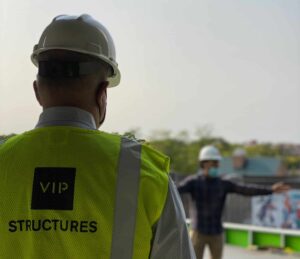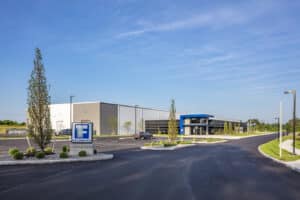Previously, we discussed 3D printing on the VIP Structures blog. The 3D printing market is expected to grow significantly over the next decade. According to MarketsandMarkets, the 3D printing market is expected to be worth 32.8 billion USD by 2023. Between 2017 and 2023, the compound annual growth rate (CAGR) for 3D printing is 25.76%, indicating high continual growth. Drivers behind the growth of 3D printing include easier development for asset owners, manufacturing cost reduction through modeling, and government investments and support of the technology.
What is 3D Printing?
3D printing is the process of replicating larger building structures into smaller 3D models for architecture, engineering, and construction firms. It involves laying successive thin layers of extrudable plastic to build the mini 3D structure. It creates time savings on modeling, offers the ability to transform drawings into prototypes, and promotes flexibility in design.
Essentially an object can be created from a digital file simply by printing successive layers of material until the desired piece is completed. If you look at a cross-section of that finished object, you’ll be able to see thin layers that have built up to create the item.
With 3D printing being a relatively newer technology in the field, it’s hard to begin to think about what’s next. Nevertheless, we challenge this on the VIP blog and stay on top of cutting-edge trends in our field for you. Some have even begun to explore 4D and 5D options and how these might impact the integrated design-build field.
What are 3D Printed Buildings?
3D printed buildings bring 3D printing to the next level. Earlier this year, we were shown a robotic, rover-like vehicle that is capable of building a life-sized structure. The process is similar to 3D printing, but this robot uses various sensors and nozzles to deposit building material precisely as programmed. What is different about these new developments are that these robots are capable of other tasks, such as milling and digging, in addition to large-scale 3D printing.
While this robot may not be building our houses within the next few years, it’s on our radar of new technology to watch. Recent developments show how large-scale 3D printing has the capability to create bridges, shelter pods, homes, and even mansions.
Possibly the most likely to be seen in coming years are 3D printed disaster relief buildings. 3D printed buildings will allow us to create safe shelters fast in situations where individuals are in need. Considering the recent weather events, it’s easy to see how effective 3D printed buildings would be to create structures that provide safety and privacy in times of need.
In future years, 3D printed buildings may even be created in space. A recent project with NASA, called the “Centennial Challenge,” tasks teams with developing 3D printed structures using specific amounts of a type of organic material found on Mars, along with other materials that can be found on the planet or easily sent there. An example of a material that would be very difficult to send to Mars is water, which is often used when creating materials like concrete. The challenge requires teams to develop innovative ways to recycle materials and use less water in the building process.
How is 3D Printing Used in Construction?
3D printing in construction has the ability to provide cost savings and eco-friendliness to the industry. Using a 3D printer can limit the number of construction workers needed on a site, saving on cost and increasing safety. Additionally, since 3D printing uses precise measurements and only uses material that’s needed to form the structure, waste is prevented.
For example, a structure can be created using layers of string between layers of pebbles, which is called reverse concrete. Builders begin by creating a capsule, which will hold the structure in place while the layers of string and pebbles are laid. Once the desired shape and number of layers have been completed, the capsule is removed and the unneeded pebbles are left and saved for future projects. This method of building can create almost any shape. So it’s easy to imagine how 3D printing can revolutionize the construction industry by creating walls, framework, and more.
In Summary
As evidenced by the growth of 3D printing and the early discussions of 4D and 5D technology, design-build firms continue to push the limits to find more beneficial, cost-effective, and stronger ways to model and build infrastructures and buildings. While 3D printing is still considered cutting-edge for many of these firms, the industry is finding ways to explore groundbreaking technologies to strive for continuous improvements in processes.
Contact our integrated design-build firm below. Our architecture, engineering, construction, and development teams assist with projects throughout Central New York and Upstate New York. Fill out the form below.



